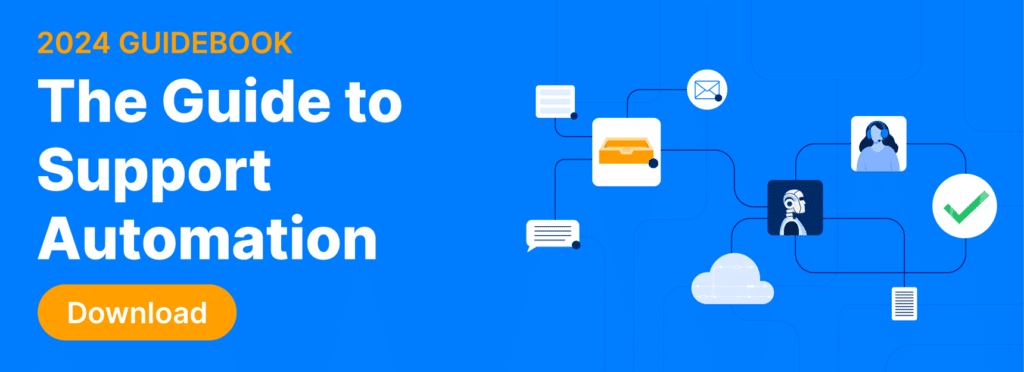In the digital age, customer support should not be human-led.
Increasing demand for instant responses and round-the-clock support is too much for any team to keep up with. New advancements in tech are inspiring many businesses to implement AI for work. In fact, nearly 70% of enterprise-level companies are already using or planning to use AI in their overall strategy.
The problem is, many leaders don’t know how to get started.
Support automation can help businesses improve productivity, reduce expenses, and achieve better experiences for customers and employees alike. It also seems to evolve every day. There are so many ways to apply AI for work that it’s hard to imagine how it would fit in with your business’s unique needs.
So, what is support automation? How can companies with high support demands use AI and automation to stand out in a demanding market? Read on for a preview of our new guidebook, The State of Support Automation.
AI Definitions
When people hear “support automation,” their first thought might be self-service. But it can do much more than that.
There are many ways to apply support automation: internally or externally, level-0 deflection or backend process automation, and more.
Simply put, support automation is the process of using AI to automate traditionally human-led support processes. It uses different types of AI to accomplish in seconds what can take humans minutes, hours, or even days.
The three main types of AI are:
- Practical AI, which learns as it’s used. Practical AI applies patterns to assist with cognitive labor, such as data analysis.
- Automation, which operates without human intervention. Automation assists with manual labor, such as pulling or updating data in documents and systems, pushing tasks through workflows, and more.
- Generative AI, which creates new content based on existing datasets. Generative AI assists with creative labor, such as writing, creating summaries, or listing action items.
These different types of AI work together to streamline the entire process of support, from the first question asked to the final resolution.
In practice, that process begins with level-0 self-service, powered by AI that can deflect over 90% of questions. If a question can’t be answered, the user will move through a variety of steps: intelligent escalation, speech recognition and biometrics, and more.
On the backend, AI learns from the questions it can’t answer and adds them to a company knowledge base. It either generates responses to tickets and send them independently, or connects with external systems to help teams quickly access or update information.
In short: support automation can accomplish a lot.
By using this technology, businesses have the ability to transform an expensive, repetitive, and painful process into one that improves customer and team experiences. The ultimate goal of support automation is to make support affordable, scalable, and easy.
Plus, businesses that leverage support automation can differentiate themselves in a highly competitive market. With over half of American consumers admitting to canceling transitions due to poor customer service, AI-powered support can make a lasting impression that ensures loyalty and satisfaction.
Ultimately, when it comes to AI for work, it’s not a question of if—it’s a question of when.
For more insights on the different applications of support automation, a framework for getting started, our key AI trends in 2024, and more, read our free guidebook, The State of Support Automation.



